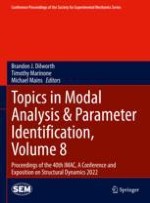2023 | OriginalPaper | Buchkapitel
15. A Physics-Based Reduced Order Model with Machine Learning-Boosted Hyper-Reduction
verfasst von : Konstantinos Vlachas, David Najera-Flores, Carianne Martinez, Adam R. Brink, Eleni Chatzi
Erschienen in: Topics in Modal Analysis & Parameter Identification, Volume 8
Aktivieren Sie unsere intelligente Suche, um passende Fachinhalte oder Patente zu finden.
Wählen Sie Textabschnitte aus um mit Künstlicher Intelligenz passenden Patente zu finden. powered by
Markieren Sie Textabschnitte, um KI-gestützt weitere passende Inhalte zu finden. powered by
